As Private Practice owners we want to help people, but at the same time, we need to have a profitable business. For Private Practice Physical Therapists, this means that we have got to get our patients to not only sign up for a full plan of care, but we also need them to attend all of their scheduled appointments.
Let’s face it, we got into the field of physical therapy to help people live healthy, active, pain-free lives. But then all kinds of issues get in the way including: time, money, and a whole lot more.
But as physical therapists, no one ever trained us how to “treat” a patient who doesn’t want to get better or complete their full plan of care. Over my many years as a private practice physical therapist I have come to realize that treating a patient has a lot to do with two areas. First it has to do with how skilled we are. Meaning how good of a manual therapist are we, how good are we at diagnosing and establishing the proper treatment plan, and how good are we at educating our patients. But often times we miss, or are not as good at, the second piece: listening to the patient and helping them work their way through the “objections” that come up over the course of therapy. These can be such things as
- “this $50 copay is a lot, I don’t know if I can continue to pay it”
- “my kids are in school at home all day and I can’t leave them alone”
- “I don’t know my work schedule yet”
- “I think I am doing better, and I want to try doing the exercises at home on my own”
- “with the holidays coming up I’m going to be pretty busy. Why don’t we put PT on hold until later and I will come back when things slow down.”
- And the list goes on and on.
I used to see this in my own practice all the time and when I actually looked at it and saw how few patients were actually completing their full course of therapy it really opened my eyes to how it was effecting my practice. It was the biggest reason we were not growing. When I started to dig into it, I found that there were some key factors that myself and my staff needed in order to be much better at really fulfilling our purpose as therapists and helping our patients REALLY GET BETTER.
I quickly became aware of the fact that if I didn’t solve this problem, I was going to ride the private practice ownership rollercoaster for the rest of my career.
Here are some things I began to think differently about. I pose them as questions for you to think abou as well:
- ARE ALL YOUR STAFF EXCELLENT SALESPEOPLE?
This is something that might require you change your mindset about. Let’s look at that statement and ask, “are PT’s, front office, and even billing staff salespeople?”. I would say that the answer is a resounding “YES”. Not from the standpoint that they are pressure selling like maybe a car salesperson, but they are selling something. What are they selling? Well they are selling the empty spots that are on the schedule, the fact that the patient needs to attend the appointment, the service provided in that appointment, and over the course of therapy they are selling and improved way of life (better mobility, less pain, improved function, etc.). So that said, we can either choose to get agreeable with all the reasons a patient will have like: “my kids have softball practice”, “I have a meeting at work”, “I’m not feeling well today”, “I’m feeling much better, I think today will be my last day of therapy”, the list goes on and on. Or we can choose to disagree with those statements and really get down to helping our patients. Because, let’s be honest, agreeing with all of those statements might make us more “nice to the patient” but it definitely won’t help them. So how your staff handle these types of objections will have a direct impact on how empty your schedule is whether it be cancellations, now shows, self-discharges, or just plain empty spots.
I understand that this may be pushing hard on you. Yes, we all want our patients to like us. But sometimes we have to be the bad guy and dig in and stand our ground and not let our patients rob us of the ability to really help them. So to that patient that says “I think today can be my last day”, I would say “WHY DO YOU THINK YOU ARE READY FOR DISCHARGE?” After they are done staring at me blankly I can then ask more questions (which is what a good salesperson does).
Being good salespeople is not something that comes naturally to most people, it is something that must be trained into them. So, as the owner or manager in a Private Practice you want to set up training for your staff that improves their ability to handle these situations and more. Initially this will involve training them in the actual steps of being a “salesperson”. There are some simple steps that every successful “salesperson” follows and when followed precisely lead to a “sale” or “close”. These steps include “building interest” in the product or service that is being sold. This step is accomplished by being INTERESTED rather than interesting.
The most common mistake any salesperson makes is being interesting. So rather than asking questions like an INTERESTED salesperson would do, the salesperson starts to be interesting and tries to give all kinds of details about why someone should buy or do something. For us as PTs that would mean that we start talking about range of motion, strength, etc. But what the patient is hearing is blah, blah, blah. Details don’t sell the product of service unless they are real to the patient. Starting with being INTERESTED, so asking questions and finding out what is important to the patient will get the ball rolling at any point in the sales process. Another step that is commonly missed is “finding out what the objections REALLY ARE”. Whether you want to believe it or not, most patients will not tell you the real reason they are not scheduling, cancelling, no showing, or stopping therapy early. Let’s face it, as PT’s we are nice people and we care about our patients. They sense that and they don’t want to hurt your feelings so they don’t tell you that they feel the money they are paying for therapy is not worth it (copay, coinsurance), they don’t tell you that they just didn’t feel like coming to therapy today so they said they “didn’t feel well”. Now let’s be clear here, what I mean is that they like you, they know they have a $50 copay but they don’t see the value in paying the $50 for whatever it is that you are doing. People need instant gratification and they don’t necessarily get that at every visit for a $50 copay. When they pay $6 for a cup of coffee, they have something to walk around and hold which releases a hormone in their body and they feel good. So when we don’t build value into what we do with our patients we will lose them. We typically substitute “being nice” for the lack of value. And it is usually around visit #6 that this becomes a problem for us. So, until we find out what the real objection is and handle it, they will continue to be a cancellation, no show, or early discharge. Again, successful salespeople are skilled and trained at discovering and HANDLING the real objection that stops patients from being successful discharges.
- WHAT TRAINING AND ACTIONS DO YOU AND YOUR STAFF DO ON A REGULAR BASIS TO ENSURE THAT YOU ARE READY TO HANDLE A PATIENTS OBJECTIONS?
Whether your staff schedules are full or to any degree empty, it is important that they are training themselves to handle ALL of the aspects of their interactions with patients. Think of it this way, as PTs we spend a lot of time training on how to be more skilled and better prepared to treat a patient’s condition or diagnosis. We spend money every year going to CEU courses, seminars, and now a days, webinars. But how much time do we spend training and drilling to field the objections that our patients will throw at us (think of the list above in the opening section of this blog)?
If we were baseball players and had a tough time hitting a curve ball, we would spend countless hours in the batting cage having someone throw us curve balls. Think of the objection such as “I think today is going to be my last day” as the curve ball. How prepared are your staff to handle that? How much time do you spend in the “batting cage” working with them to help them to handle that objection?
In my clinic each staff member spends a minimum of 30 minutes every week drilling and practicing certain scenarios. Typically, these have to do with the time of year (holiday seasons, summer vacations, school starting), kids schedules, work schedules, financial issues etc. The whole concept of drilling and practicing is that our staff need to be prepared so that when that patient throws that “curve ball” at them it doesn’t throw them off balance. The more prepared they are the easier it is for them to field the comment and respond back to it with a question (as noted in #1 above). So for example instead of not knowing what to say to the patient and thus agreeing and discharging them, they are prepared with a statement to the extent of “what is it that makes you feel like you are ready to be on your own?”
But if our staff don’t know what to do, they will take the path of least resistance. And this is not what we want them to do. It doesn’t help the patient, it doesn’t help the practice, and it doesn’t help them meet their purpose of helping people.
Now if you are like me you may be thinking “wait, this means I will have to give up treatment spots”. To which my reply is the following. “If giving up 30 minutes of time for every clinician means that you will gain additional visits, is it worth it?” If giving up 30 minutes of a clinicians schedule (which costs at worst $30) will result in even just one patient scheduling and keeping their full plan of care (which is worth an average of $750) that seems like a great investment to me.
So, take a look at how you can start your staff training and drilling with each other at least 30 minutes per week.
- DO YOU HAVE A PROCESS TO FOLLOW WHEN A PATIENT NO SHOWS, CANCELS, OR TRIES TO DISCHARGE THEMSELVES EARLY FROM CARE?
Here are some questions for you….
- Do you have all your evaluations schedule their full plan of care at the time of the evaluation?
- How do you confirm every appointment with your patients, and are you sure that the message you want delivered is received?
- Does a patient really know what you expect of them related to their appointments?
- Do you have a cancellation policy in place, and do you explain it to your patients?
If the answer to all the above is “yes” then great, KEEP IT UP, make sure everyone is doing the same thing and START using #1 and #2 as well, your condition will improve. If the answer is “no” I ask you this…. “what is keeping your from doing these things?”. Sometimes I will hear things like “our patients will get upset with us if we have a cancellation policy”. To which I answer – no they won’t if you explain to them WHY you are putting this policy into place and then ask them QUESTIONS about why it is so important to attend their appointments. The reason you are doing it is that you want to help them, and you can’t do that if they don’t come to therapy.
So often I will hear “we use a text reminder service to confirm everyone’s appointment”. While I think this is great, my question is this – “do you have a way of knowing that the message was received and more importantly that it was READ and will be complied with. When a patient calls to cancel, no shows, or tries to discharge themselves, do you have a process to handle this. This does bring us back to # 2, TRAINING, but you want to know that your staff have a method to follow so they stay in control of the situation and don’t get agreeable with the patient as this will always end up in empty spaces on your schedule.
This system is something that will not only give you better results but it will ensure that you stop leaking money from the obvious things like cancellations and no shows but also from those invisible things like patient discharging themselves and more.
If I told you that getting a patient to schedule their full plan of care at the time of the initial eval would result in a significant increase in the patient completing their full plan of care, would you take the time and place the emphasis on doing so? Think about it this way, if a patient schedules all 12 visits up front, they will plan their next 6 weeks around their therapy appointments, vs the other way around. But if they schedule 1-2 weeks at a time, you are placing yourself in a “sales process” every 1-2 weeks. And guess what? As the patient is getting better and having less pain, those sales cycles get harder and harder. If you schedule 10 visits at the eval and tell the patient “we will see how you are doing and decide on more”, you will have to deal with a patient who thinks they can “finish it off on their own” when you come to visit #10 and you want them to schedule 2 or 4 more visits in order to truly get “better”.
Here is an interesting fact for you. The average person needs to hear or see something more than 3 times in order for it to mean something to them. So, if we want a patient to “remember” their next appointment and keep things from getting in the way, we need to “confirm” their appointment at least 3 times at each visit. But here is the kicker: don’t do it by telling them when their appointment is, they aren’t listening to you when you do. They will “yes” you in order to move on and get to the treatment. Don’t do it by asking them if Monday at 2:00 still works. They will do the same thing and “yes” you. Ask them “when is your next appointment?”. This causes them to have to stop and think about when their appointment is. By doing so they have to use a different part of their brain and mentally look at their calendar and say “what else is going on?” and “does that time work for me?”. Now they will really keep that appointment.
Here is why confirming their appointment (verbally, not just by text) is so important. A study done on over 200,000 patients showed that when a patient misses as few as one appointment, they are 33% less likely to complete their full plan of care. So that means that the simple step of confirming an appointment is very valuable to the practice and also to the patient.
These are just a few of the things to think about when we are talking about having a system.
I hope this gives you some good data to think with. I would love to hear what you think about this blog as well as chat with you further about your experience as a practice owner. Feel free to email me at: mike@fortisbusinesssolutions.com.
Here’s to ACHIEVING THE FREEDOM YOU DESERVE as a Private Practice owner.





